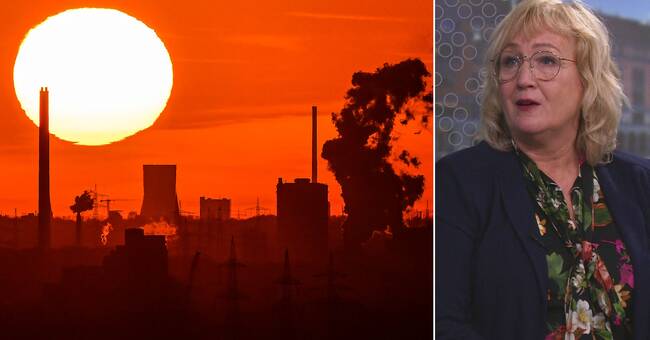What made coal power start to collapse and Volvo invest heavily in electric cars?
Well, a gnarly, unglamorous building that has been going on for decades, signed by climate bureaucrats in Brussels.
During my years as SVT's EU correspondent in Brussels, a system was launched that made most of us yawn.
The idea was that industries would have to pay for every tonne of carbon dioxide they emitted.
But the system that premiered in 2005 was full of loopholes, there were far too many emission rights in circulation, they were too cheap and the environmental movement scolded the European Commission for creating a toothless paper ladder.
During the financial crisis in 2008, prices fell further as companies went on a low.
Prices were around eight euros per tonne of carbon dioxide.
Record price of emission rights
But in 2018, the EU Council approved a total revision of the system in order to make it more expensive to emit carbon dioxide.
It yielded results and between 2017 and 2019, the price of emission rights increased many times over.
Suddenly, the market came to life and the prospect of a shortage of emission rights has caused prices to start rising.
On Friday, the price broke a record, 31 euros per tonne of carbon dioxide, after the announcement that the EU will tighten its climate targets by 2030.
The figures in the coal power plants' financial statements have begun to shine red.
Many coal-fired power plants dramatically reduce their production.
The price shock has led to a reduction in coal production in the EU by 24 percent in 2019. In Spain and Portugal, among other places, it is now more profitable to invest in solar and wind power than to continue operating the old coal-fired power plants.
Spain has shut down more than half of its coal-fired power plants.
Increasingly tough demands on the car industry
In the same way, the EU's emission rules for cars have begun to become really noticeable for car manufacturers.
They were launched in 2009 and have been gradually tightened up.
By 2021, manufacturers must meet the so-called 95-gram limit for carbon dioxide emissions.
The fine, for those who do not meet the requirements, is SEK 100 per gram.
Volvo Cars informs SVT that it will meet the requirements for 2020 and thus avoid a fine of close to SEK 4 billion.
But in 2021 it will be tougher and by 2030 the emissions will be down to 60 grams.
Car manufacturers are meeting this with a number of measures: discounts on plug-in hybrids, more expensive petrol cars, investment in electric cars, trade in emission rights among themselves and lighter cars without a lot of extra equipment.
But there are also complaints that the EU has introduced the world's toughest demands that distort competition.
Tighten the thumbscrews
Now that the EU has tightened its targets, the pressure on the car and energy sectors will increase further.
As I said, the regulations have been in place for a long time, and a climate-committed EU Commission is forging plans on how to further tighten the thumbscrews.
According to the researchers, IPCC, the countries of the world have seven years to completely stop carbon dioxide emissions if the warming does not exceed 1.5 degrees.

